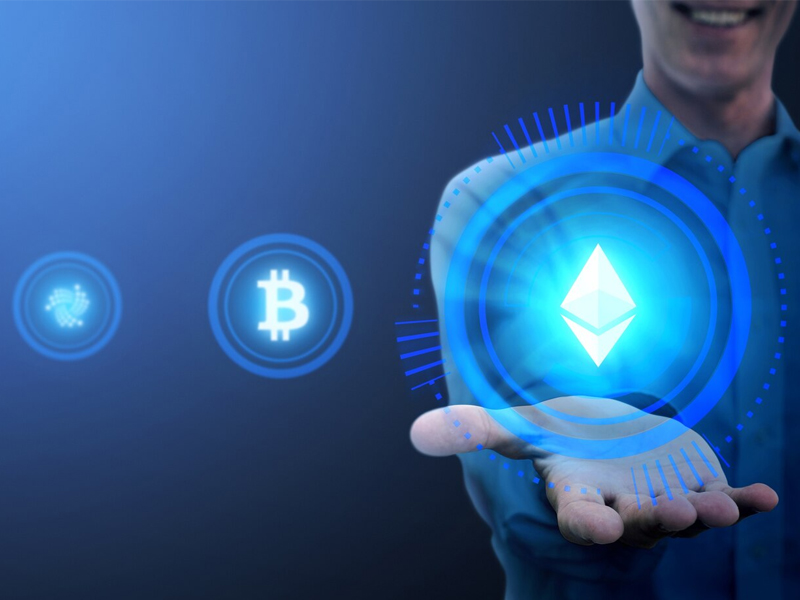The Sharding Revolution: Accelerating Ethereum Transactions into the Future

Blockchain
Understanding Sharding
Sharding is a scalability solution designed to address the bottleneck issues associated with blockchain networks, particularly Ethereum. In essence, it involves breaking down the blockchain into smaller, more manageable parts called shards. Each shard operates independently, processing its transactions and smart contracts without relying on the entire network.How Does Sharding Work?
In a non-sharded blockchain, every node processes every transaction, leading to a congestion problem as the network grows. Sharding decentralizes this process by dividing the network into smaller shards, each responsible for its subset of transactions. This parallel processing approach significantly enhances the network’s capacity to handle multiple transactions simultaneously. Imagine a library with a single librarian managing all books. As more people visit the library, the librarian becomes overwhelmed. Sharding is akin to having multiple librarians, each handling a section of the library independently, reducing the overall workload and improving efficiency.The Impact on Developers

Faster Development & Deployment
Reduced transaction wait times mean faster development cycles and quicker application deployment.New Use Cases
Sharding opens the door to previously infeasible applications requiring high transaction volume, such as micropayments and real-time gaming.Scalability and Efficiency
One of the primary challenges developers face on Ethereum is scalability. Sharding addresses this issue head-on, allowing developers to create decentralized applications (DApps) and smart contracts with enhanced scalability. With the potential for significantly increased transaction throughput, developers can create more robust and efficient applications capable of handling a larger user base.Reduced Costs
Sharding not only increases speed but also reduces transaction costs. With the ability to process more transactions simultaneously, the network becomes more cost-effective, making it an attractive platform for developers seeking economical solutions for their decentralized applications.Innovation Opportunities
As Ethereum’s scalability improves, developers can explore more ambitious projects. Sharding opens doors for innovation by enabling the creation of complex applications that were previously hindered by scalability limitations. This innovation surge could lead to a new wave of decentralized solutions across various industries.Impact on Users
 For users, sharding translates to:
For users, sharding translates to:
Lower Transaction Fees
Increased network capacity should lead to lower transaction fees, making interacting with the Ethereum network more affordable.Faster Transactions
For users, the most tangible benefit of sharding is the significant increase in transaction speed. With transactions processed in parallel across multiple shards, users can experience near-instantaneous confirmations, eliminating the frustrating delays often associated with high network congestion.Improved User Experience
As Ethereum becomes more scalable and cost-effective, users can enjoy a smoother and more seamless experience when interacting with DApps and conducting transactions. This improved user experience is vital for mainstream adoption and the continued growth of the Ethereum ecosystem.Wider Adoption
The enhanced scalability offered by sharding positions Ethereum as a more attractive platform for a broader range of applications. This, in turn, can lead to increased adoption by developers and businesses, further solidifying Ethereum’s role as a leading blockchain platform.Challenges
While sharding holds immense potential, it comes with its own set of challenges. Implementing a secure and efficient sharding solution requires careful design and meticulous development. Additionally, ensuring interoperability between shards and the mainnet is crucial for a seamless user experience.
Despite these challenges, the Ethereum community is actively working on overcoming them. The future roadmap anticipates a phased implementation of sharding, with initial stages expected to be rolled out in the coming years.
Future Outlook
Sharding is not a mere upgrade; it’s a paradigm shift for Ethereum. While the technology is still in development, the potential it holds for revolutionizing transaction throughput is undeniable. Developers and users alike can look forward to a more scalable, efficient and cost-effective Ethereum,unlocking new possibilities for decentralized applications and blockchain- based solutions. In conclusion, as Ethereum evolves with sharding technology, the future of blockchain looks promising. The sharding revolution is set to propel Ethereum into a new era, where speed, scalability and efficiency coalesce to create a more accessible and dynamic blockchain ecosystem.Frequently Asked Questions?

01
AR and VR
The Quest 3 Gets Personal: Unveiling Meta AI’s Assistant for VR
Jul 26, 2024

01
Tech news
Third-Party Cookie Crumble? Google Reverses Course, Keeping Cookies in Chrome
Jul 25, 2024

01
AI & ML
The Power of Creation, the Price of Privacy: Top Risks of Generative AI
Jul 24, 2024

01
Cybersecurity
Decoding the Disruption: Recent Microsoft Outage and Its Global Impact
Jul 22, 2024
The Quest 3 Gets Personal: Unveiling Meta AI’s Assistant for VR
Third-Party Cookie Crumble? Google Reverses Course, Keeping Cookies in Chrome
The Power of Creation, the Price of Privacy: Top Risks of Generative AI
GPT-4o Mini: Unveiling OpenAI’s Accessible AI Powerhouse